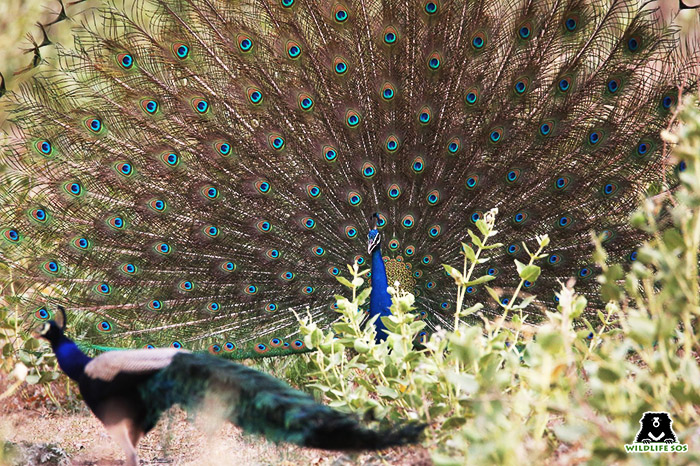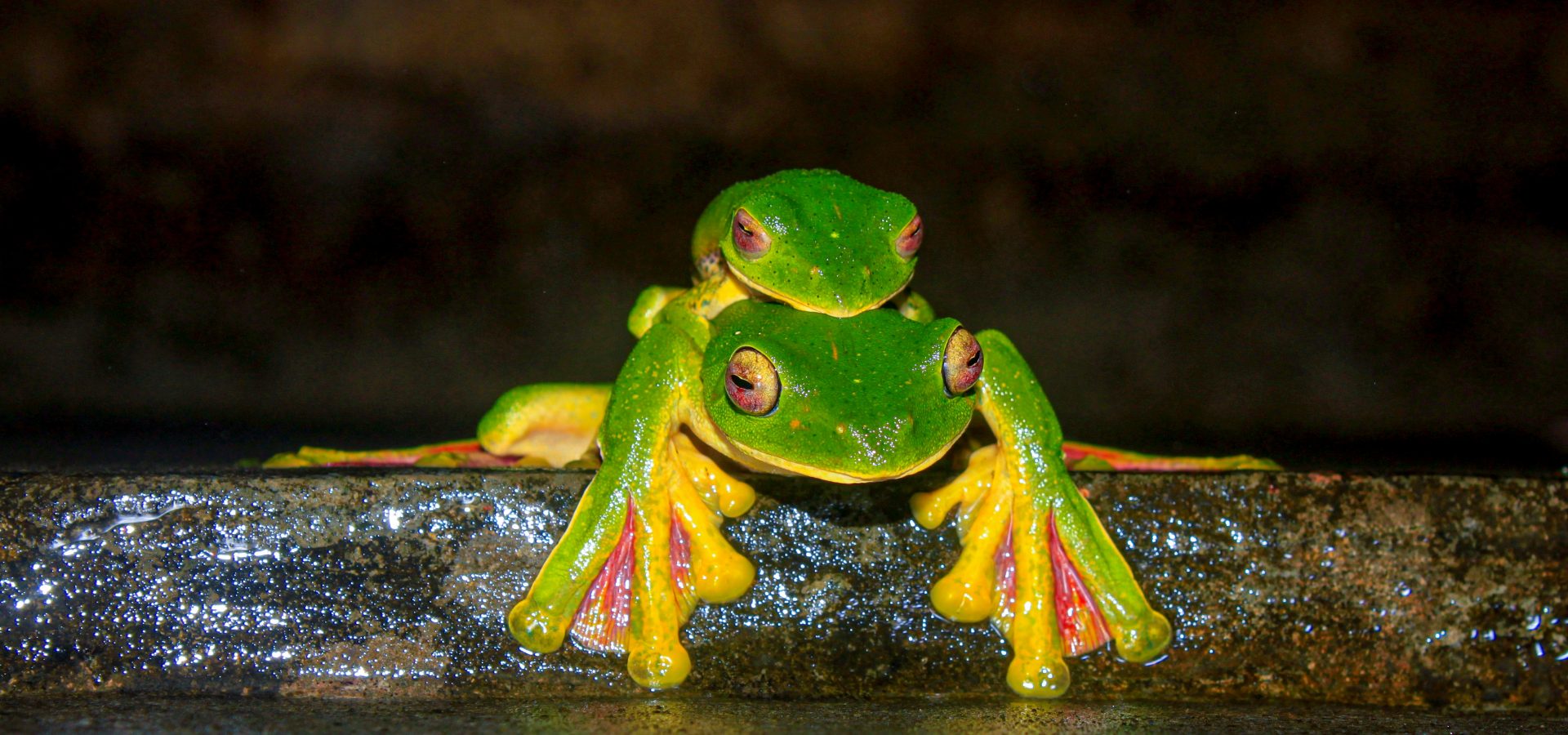A day in the life of an animal in the wild is full of thrilling adventures and unforeseeable quests. From setting out to forage or hunt for prey, to escaping from and competing with rivals – the wild ones are always on pins and needles. However, the ultimate pursuit they undertake is to find The One!
Finding partners is important not only to give birth to young ones, but also to tend to the infants and ensure their family line continues. The first step to courtship and mating is to impress an individual of the opposite sex. For this particular reason, animals go above and beyond with their bizarre ornaments and dramatic displays.
Why Do Animals Have A Preference?
In the natural world, just like ours, choosing a mate is a momentous task. Choosing a closely-related individual can lead to inbreeding, while selecting one with high-level of dissimilarities can lead to complications. They also need to ensure that their progeny is gifted with the best genes of all. Animals, thus, undertake this task with utmost gravitas.
Male individuals of most animals go an extra mile by investing a large chunk of their energy to woo their partner. They tirelessly work to advertise their strength, health, and desirability – which are the bases of the female’s selection.
The Brighter, The Better
Bright colours sure put on a show in the animal kingdom! Numerous females find brighter colours more attractive. Brightness of a bird’s feather suggests their efficiency to forage for food, which is indeed a requirement for their future offsprings. In the case of Fan-throated lizards, males display a colourful patch of skin hanging from their throat, known as dewlap. By perching on a rock, they are able to showcase their bright colours and attract a potential mate!
Individuals of certain fish species, like the two-spotted goby and guppies can sometimes have brightly-coloured bellies during the breeding season. It has been observed by scientists that those with brighter colouration have higher chances to mate than dull ones.
Display of Ornaments
Animals during their breeding season display the best of their features! Elaborate feathers, crests, and colourful fans help them deliver some stunning auditions for the potential mate. But sometimes, such displays may come at a cost. Peacock feathers, for instance, when open on display are meant to attract females, but also make the males vulnerable as prey. This signal, however, is an honest indicator for the female to note that the male is ready to face this risk, despite the potential handicap. These are the very genes females vie for in their offspring.

Male Breeding Party
Male animals are often seen aggregating in a common place, called leks. Birds generally find an appropriate spot where each male either puts himself on display or fights with another. Sage grouse, mananiks, and parrots put on a show as they parade displaying their best features. They dance and sing to the best of their abilities as an invitation for the females. Male birds even fight for dominance in a lekking arena, while the females watch. Those who win or have the most impressive display are chosen by females to mate.
Battle For Life
Male animals can often be seen engaging in fierce battles to win over a female. The winner of these fights has higher chances of mating. Animals have inherent weapons like antlers and horns that help them combat. Male deer engage in fights using their antlers and roaring sessions. They lock antlers and begin pushing each other, until one gives up and loses the chance to mate. Indian Blackbuck is known to congregate in leks, where males fight for the right to mate. Great Indian Hornbills males utilise the casque on their heads to engage in an aerial competition with other males. They casque-butt one another, and the winner can finally pursue the female by offering her fruits!
Music For Love
One of the most common ways for animals to attract their mate is by advertising an intricate melody. Numerous male animals produce a wide vocabulary of tones to exhibit their desirability towards the female. While some are audible to humans, other sounds may be beyond the human audible range. These songs help animals announce their territories, display their health and fitness, and a duet (exchange of tones) even helps them bond. Primates, amphibians, birds, and even aquatic animals have evolved excellent acoustics to attract their mate. Read more about the musicians of the jungle here.
Dance-Off
Birds perform an eloquent dance by flailing their feet and feathers. Birds of paradise residing in Papua New Guinea are famously known for their dance movements that are performed to impress others. Their tail ornaments come in handy during the display of courtship as the male flares and displays itself while swooping around the female. Lesser flamingos are social birds that engage in an elaborate dance to impress their mate. Over 1,000 individuals can congregate in water bodies as they march in sequence while bobbing their heads, bowing, and wing-saluting.
Found in the grasslands of India, lesser florican males can be spotted rapidly fluttering and leaping above the tall grasses. In just a minute, they can leap about 300 to 400 times, reaching a height of two metres! The dance performed during the breeding season is to attract nearby females. Grebes engage in water ballets, where males and females dance together to strengthen their bond. This spectacular display involves unusual moves like head bobbing, belly flopping, and bob preening.
Gifts & Presents
Invertebrates like moths, flies, and spiders are known to give their counterparts gifts that suggest their fitness. Female hanging flies will only mate with the male if they bring them a large insect during copulation. Male spiders wrap insects in silk and present it to the females. Bella moth males give the females a chemical substance which acts as an attracting pheromone. This gift is then used by the females to defend herself and the eggs. Even female barn owls receive gifts as a mating strategy by males!
Do Or Die
For certain species, mating is literally a matter of life and death. Male individuals of anglerfish, jumping spiders, and praying mantis have evolved a rather idiosyncratic mating strategy. In order to mate with a female, small-sized male anglerfish bites into the large female, attaching itself like a parasite. Their internal systems eventually dissolve into one, and the male is able to provide sperm for breeding. The female praying mantis exhibits sexual cannibalism where she chews the male’s head during or post copulation. Female jumping spiders and black widows, being much larger than their male counterparts, sometimes end up feasting on them! When they are disinterested in the male’s pursuit to mate, they resort to cannibalism.
Urine Does The Trick
Animals like porcupines use urine markings – where males spray urine on females to transmit chemical cues. A few bat species have come to utilise their sense of smell to find the perfect mate: Males produce a “perfume” of their own by mixing numerous substances like urine, saliva, and secretions from their penis. This broadcasts a unique odour by each, from which the females select one.
Indian leopards and Bengal tigers also use scent marking to suggest their availability to mate with their partner. Females generally spray urine all around her territory, waiting for the male to pick up the scent and court her. Male Asian elephants enter a period of elevated testosterone, called the musth. They smell a female’s urine to gauge her receptibility.
Architectural Marvels
Bowerbirds are well known for their intricate bowers or “love nests” designed by males. They use a myriad of items including flowers, fruits, stones, twigs, leaves (and even plastic!) Some craftsmen even follow a colour-theme to attract their counterparts.
Similarly, male baya weavers showcase their intricate creativity by weaving a nest using fibres, twigs, and leaves. These pendulous-shaped nests are then inspected by the females, who can then choose to mate with the male who created the most suitable home!
Phew! Finding a mate is indeed a difficult task… and these animals sure have created some crafty measures as mating strategies!
Subscribe to the Wildlife SOS newsletter to get regular updates about the work we do.





